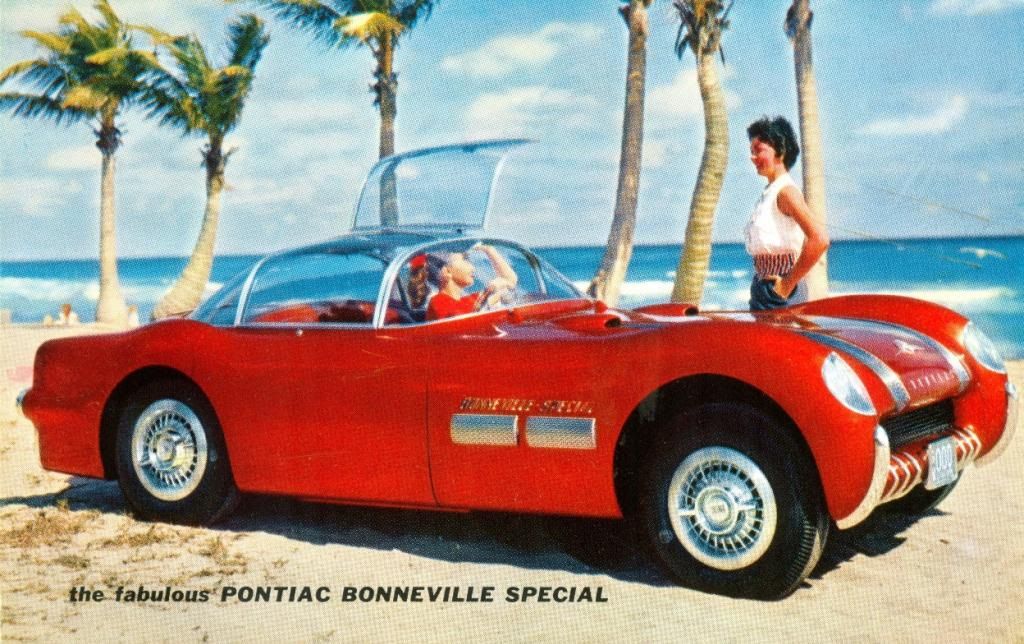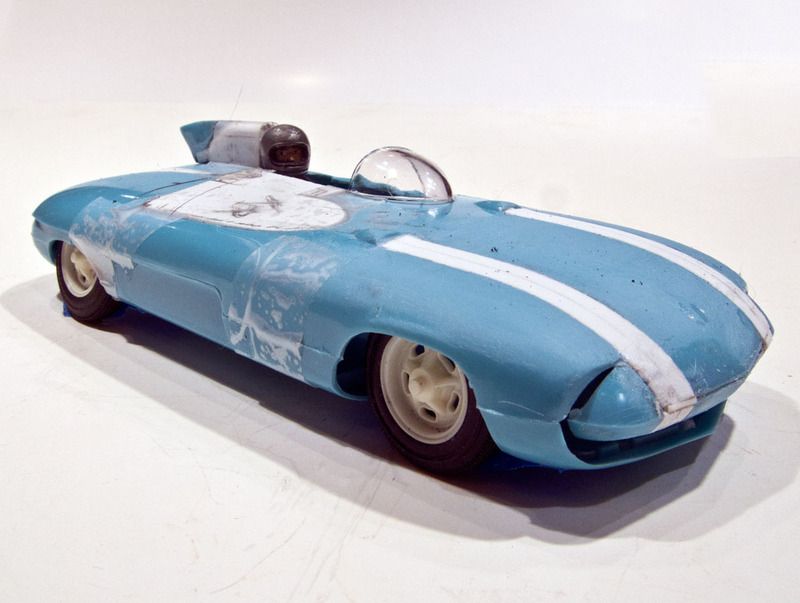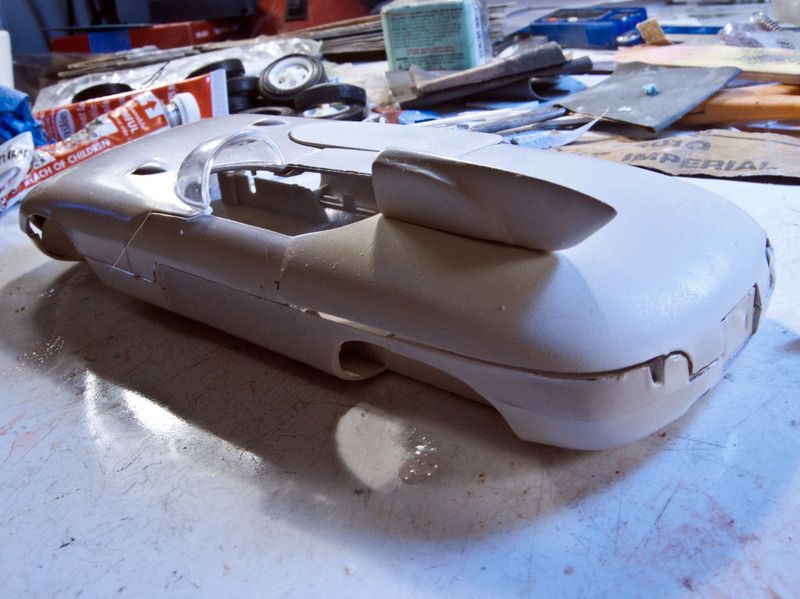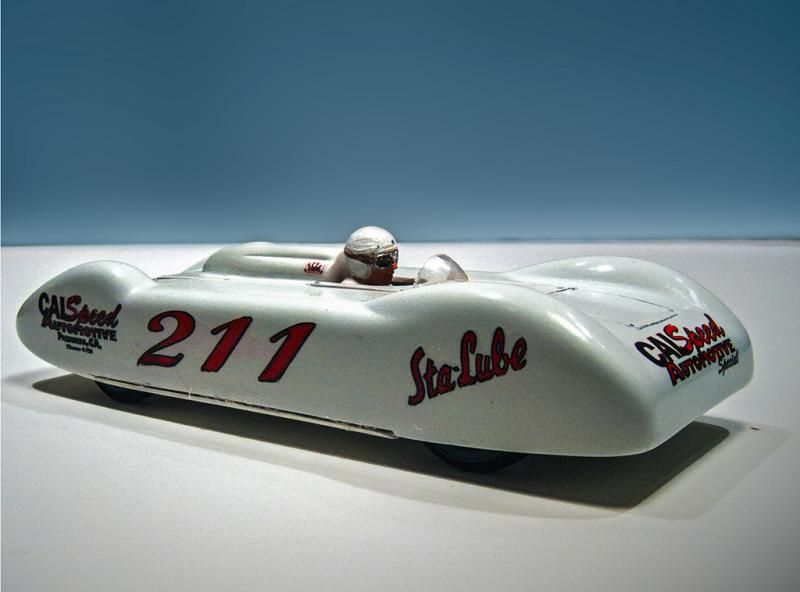Post by Bernard Kron on Dec 8, 2016 20:49:10 GMT -5
The Pontiac Club de Mer always looked like a race car to me and I’ve wanted to do one in that manner for a long time. I was able to score a Revell Club de Mer kit at last year’s NNL West and I finally sat down the other night and did the basic work needed to do the conversion.
The Club de Mer always had race genes in it, clearly being influenced by European sports cars of the period, especially the Pininfarina Disco Volante series of Alfa Romeos which eventually became the classic and long-running Alfa Romeo Duetto production sports car.
Here’s photographic evidence of the race car influence from the pages of Mechanix Illustrated at the time the Club de Mer was first shown:

One of the interesting things about the Club de Mer is the fact that Pontiac did everything they could to make the car as low and sleek as possible, even going so far as using smaller 14-inch wheels and tires. Unfortunately the result was a car that looked great all by itself but somewhat awkward with real humans sitting in it. This is especially true in the Revell version if you use the included figurines, but even the relatively petite model in the original publicity shots back in ’56 stuck quite a ways out of the bodywork.

The original Bonneville Pontiac was a dream car from 1953 called the Bonneville Special, unfortunately not exactly the best work come out of their styling studios. My concept was to do a kind of Bonneville Special II or Club Bonneville, as if Pontiac pulled a mold of the Club de Mer bodywork to use for a record run on the salt flats with a real streamlined race car. Perhaps they might even have tried their hand at road racing the way Chevy did in ’57 with the Corvette SS. Here’s the original Bonneville Special from ’53, a much larger and ungainly car:

As Pontiac would have done at the time, I’ll try to maintain as many of the Club de Mer styling cues as I can while still remaining true to the race car concept. The first order of business was to set the driver’s seating position further back so he didn’t sit upright in the wind like he does in the show car. Next was to build a metal tonneau cover, kind of D-type Jaguar style, over the passenger area. The dorsal fin was retained but removed from the center of the rear deck and incorporated in the headrest, again reminiscent of the D-Type which doubtless would have been an influence at the time. All the busy chrome trim was filled in to smooth the surfaces, and the wheels and tires swapped for period Halibrand 15-inch mags and Firestone tires. The paint job will be a period American racing colors white and blue scheme, either white with blue stripes where the chrome trim once was, as Briggs Cunningham did, or the inverse, in which case the car will be metallic blue with white stripes.
This is where I’m at so far. All the basic conversion work has been done as sort of a proof of concept. In one of the pictures below I included a driver figurine to make sure he sat down in the cockpit properly. Any blue plastic you see is from the revel kit, while anything white is part on the conversion, mainly copious amount of styrene strip and sheet although Halibrands are courtesy of Replicas & Miniatures Co. of Maryland. Like the original Revell kit, this will be a curbside. If I went full detail I would be still building it late next year! That’s a battle I save for another project! For the moment there’s plenty of sanding and filling to do before I can tackle the paint.
Thanx for Lookin’,
B.





The Club de Mer always had race genes in it, clearly being influenced by European sports cars of the period, especially the Pininfarina Disco Volante series of Alfa Romeos which eventually became the classic and long-running Alfa Romeo Duetto production sports car.
Here’s photographic evidence of the race car influence from the pages of Mechanix Illustrated at the time the Club de Mer was first shown:

One of the interesting things about the Club de Mer is the fact that Pontiac did everything they could to make the car as low and sleek as possible, even going so far as using smaller 14-inch wheels and tires. Unfortunately the result was a car that looked great all by itself but somewhat awkward with real humans sitting in it. This is especially true in the Revell version if you use the included figurines, but even the relatively petite model in the original publicity shots back in ’56 stuck quite a ways out of the bodywork.

The original Bonneville Pontiac was a dream car from 1953 called the Bonneville Special, unfortunately not exactly the best work come out of their styling studios. My concept was to do a kind of Bonneville Special II or Club Bonneville, as if Pontiac pulled a mold of the Club de Mer bodywork to use for a record run on the salt flats with a real streamlined race car. Perhaps they might even have tried their hand at road racing the way Chevy did in ’57 with the Corvette SS. Here’s the original Bonneville Special from ’53, a much larger and ungainly car:

As Pontiac would have done at the time, I’ll try to maintain as many of the Club de Mer styling cues as I can while still remaining true to the race car concept. The first order of business was to set the driver’s seating position further back so he didn’t sit upright in the wind like he does in the show car. Next was to build a metal tonneau cover, kind of D-type Jaguar style, over the passenger area. The dorsal fin was retained but removed from the center of the rear deck and incorporated in the headrest, again reminiscent of the D-Type which doubtless would have been an influence at the time. All the busy chrome trim was filled in to smooth the surfaces, and the wheels and tires swapped for period Halibrand 15-inch mags and Firestone tires. The paint job will be a period American racing colors white and blue scheme, either white with blue stripes where the chrome trim once was, as Briggs Cunningham did, or the inverse, in which case the car will be metallic blue with white stripes.
This is where I’m at so far. All the basic conversion work has been done as sort of a proof of concept. In one of the pictures below I included a driver figurine to make sure he sat down in the cockpit properly. Any blue plastic you see is from the revel kit, while anything white is part on the conversion, mainly copious amount of styrene strip and sheet although Halibrands are courtesy of Replicas & Miniatures Co. of Maryland. Like the original Revell kit, this will be a curbside. If I went full detail I would be still building it late next year! That’s a battle I save for another project! For the moment there’s plenty of sanding and filling to do before I can tackle the paint.
Thanx for Lookin’,
B.
















 It's an interweb thing.....
It's an interweb thing.....